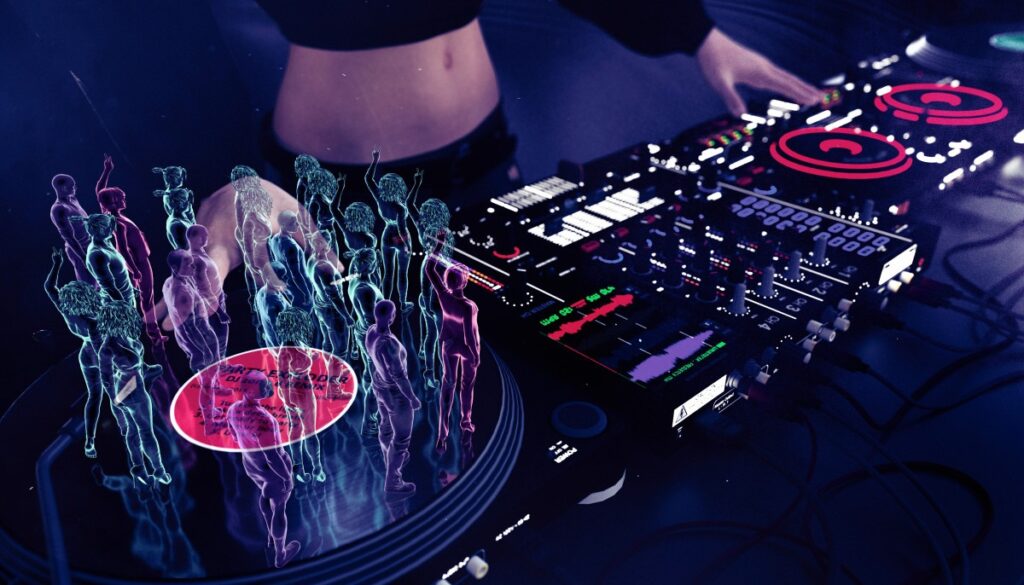With each major music festival domino that falls due to the impact of COVID-19, Redpill VR smells the blood in the water.
Developing mind-bending, immersive experiences that blend music with virtual reality, Redpill has emerged as one of the nation's preeminent VR companies. They have been working tirelessly for the better half of the last decade, looking through rose-colored VR glasses to mutate the modern music festival into an immersive shared experience that can be funneled straight to the cerebrum of the raver.
"At the end of the day, the core element of the experience is to be social," Redpill's Isaiah Martin told EDM.com. As the organization's Chief Magic Officer, Martin has a bird's-eye view of its technological advancements, helping to spearhead them with the ultimate goal of changing the way music fans connect through shared experiences. Redpill has created a one-of-a-kind virtual world that presents itself as a utopian music festival, which alchemizes the incandescent beauty of Electric Forest's neon-swathed jungle with the spellbinding allure of Avatar's Pandora.
Using a VR headset and two touch controllers, revelers are able to beam in and explore the futuristic world as virtual doppelgängers, engaging with other likeminded fans in real-time to the soundtrack of live electronic music. That's right—no pre-recorded sets here. Redpill's engineering allows DJs to perform live as avatars of themselves while their fans' avatars shuffle and high-five in the crowd—a feat that requires technological logistics that would make Mensa's overlords scratch their heads.
While the initiative is, of course, fleshed out in VR, such an ambitious project must have some semblance of reality in order to cater to modern music festival aficionados. When asked about how Redpill's VR world can mirror the authenticity of in-person shows, Martin said there are a number of real-life festival interactions he pulled inspiration from to form a cohesive latticework.
"The unique objects you can find at a festival, the goods you can trade, the things you share with one another—these are all a key part of the social aspect here," he explained before saluting EDM. "These cultural things are about how we connect in a social way. Especially with EDM, there is this idea of community, almost far greater than most other genres. It really is an anchor of our community."
Amplifying the immersive nature of the Redpill cosmos are physical touch points, which are splayed throughout. They take shape in the form of iridescent globes and pulsating prisms, gently palpitating like a beating heart. They are reactive so users can physically reach out and tap them, eliciting phantasmic responses like a kaleidoscopic splash of a hue or the plume of a technicolor flower.
The world is essentially a supercollider of interconnectivity, which looks as if it was plucked out of a time machine with the dial set to the year 2050. "We are focusing on the concert of volumetric shows, with objects that defy gravity. You can really defy physics and build anything in a virtual world, like these objects being audio reactive and controlled in a new way," Martin said. "It's a new art form of visual expression."
How does such a trailblazing world come to fruition? Martin likens it to "creating a combination of the next Call of Duty and Dreamworks' The Trolls." "You have this army of technical and visual artists, who are backed up by an army of programmers. Once we've sat with a client and given them the guidelines of what's possible, we then create a vertical slice—almost like a blueprint."
However, just like a blueprint of a major music festival, it takes eons of time to translate the slice into a tangible experience. Martin noted that an indefatigable team of 75 people work around the clock to actualize a project before finalizing a fully immersive world—a painstakingly meticulous process that can take ten to twelve months.
After disrupting the music festival industry, next on Redpill's to-do list is a landmark partnership with Ushuaïa, a venerated Ibiza nightclub that is ubiquitously regarded as one of the globe's best clubbing destinations.
Raving at the world's most coveted club as an avatar of yourself from the seat of your pajamas may seem like a pie-in-the-sky idea, but it will soon become a reality. "Right now when you go to Ushuaïa, you can pack 4,000 or 5,000 people, but it doesn't matter who you book; you cannot put more people in those four walls," Martin said. "Our goal is to be able to let everyone from around the world attend the same show and scale that to a far greater audience so that artists have a reach way beyond those four walls. For people to be able to connect from anywhere in the world and share a social music experience together, without the limitations of distance, allows for such a greater degree of connectivity."
Considering the precarious nature of festivals after the music community was decimated by the impact of COVID-19, virtual shows have become a fad. Livestreams of digital concerts and even full music festivals via platforms such as YouTube and Twitch have become the new norm. However, the live music industry will return at some point, which begs the question, of whether or not Redpill's foray into the electronic dance music event space can be sustainable after the safe return of in-person events.
When exploring how Redpill plans to enhance its experiences to remain viable and compete with festivals and clubs, Martin pointed to the company's pre-COVID head-start. "We were already hard-charging forward on this for the last five-plus years before COVID hit. So we already have an extremely strong belief that there is a marketplace for virtual music destinations and shared experiences," he asserted. "COVID just simply exclamation-pointed it to a crazy level."
"Coachella can’t get any bigger. EDC really can’t get any bigger," he continued. "When you look at the sustainability of festivals, you’re having a scarcity aspect on some of the really big ones, a saturation aspect with the million others, and an environmental impact since most people travel somewhere between 400 and 800 miles to attend a festival. The fact that you have to get to a certain place on the planet, be able to get a ticket, and get your friends together to have this music experience, makes for a lot of challenges."
"With COVID, we don’t know how fast events will come back or how big they’ll be able to be," Martin declared. "I think reality is the new luxury, and virtual is how people will consume on a regular, day-to-day basis in the future."






